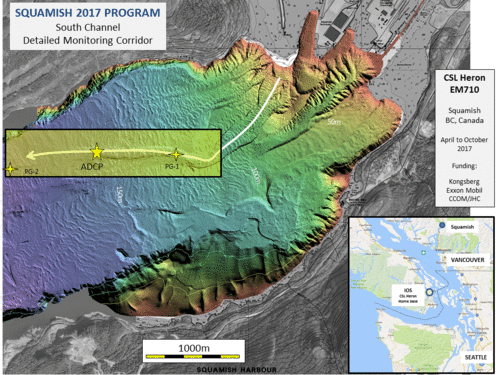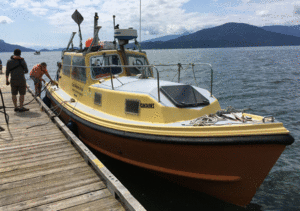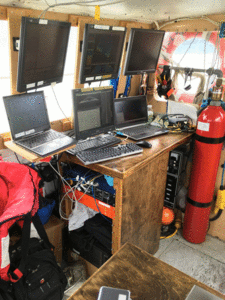
The aim in 2017 was to monitor flow events in that 2 km section of the South Channel, particularly the transition from channelized to unconstrained flow. To that end, a 600 kHz ADCP has been suspended 15 m off the bottom close to the channel termination. The plan is to collect a total of 12 weeks of data. In the first 6 weeks (the data recovered so far), approximately 15 flows, ranging from 0.3 m/s to 2.5 m/s have been detected.
Complimenting the flow information, updated bathymetric and backscatter surveys in April, May and June (and upcoming July) have been performed to measure the morphological change. As part of the June update, a 1.5 m/s flow was caught in real time, with surveys immediately before, during and after.
A new focus in 2017, is to look at the backscatter image changes. Normally, when running directly on top of the channels, little could be discerned that was not contaminated by seabed slope signatures. This year, offset lines looking obliquely into the channel allow far better delineation of changes in the surficial backscatter signature.
The ExxonMobil funded component addresses the idea of having sensors in the flow that would be capable of reporting in real time. This year, the viability of leaving pressure sensors on seabed moorings along the channel is being investigated. Should they prove viable (if they survive the high velocity flows), the intent is to use them to trigger acoustic links to turn on high sampling rate data downstream. Acoustic links have not been tested this year due to delays in funding schedule.


